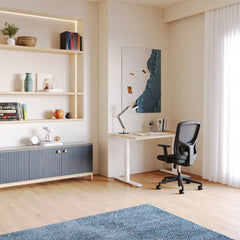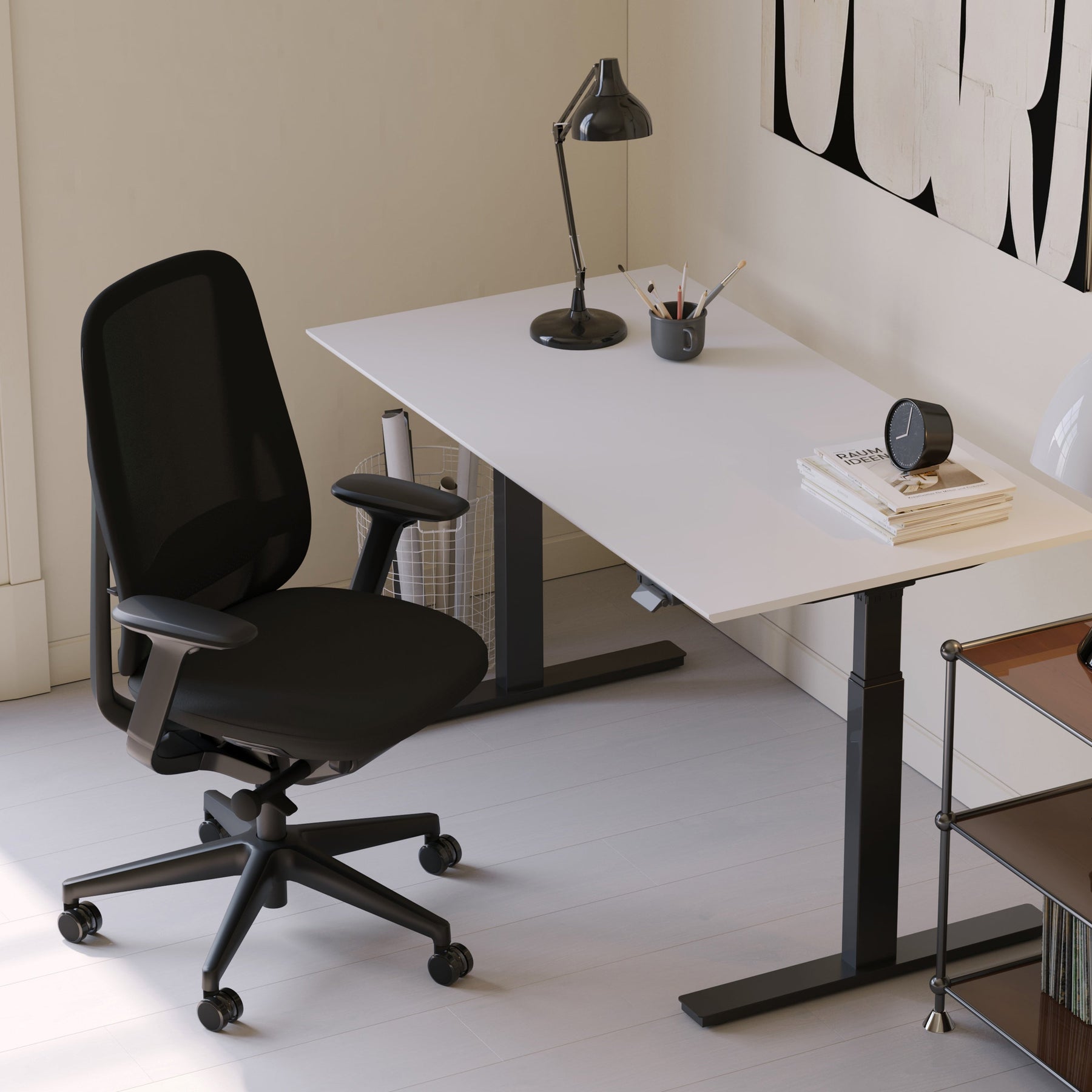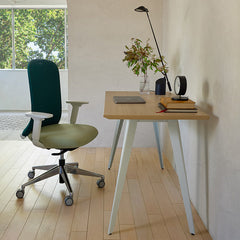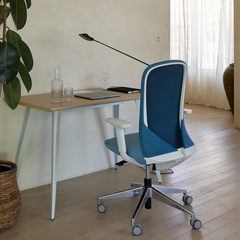Get 10% off your first order
Find the office furniture that’s designed to match your style, comfort, and needs perfectly. Subscribe
Unclutter Your Life: The Simple Genius of Modern Furniture

Visit quiz page to see how we makes it easy to create an inspiring workplace


For too long, consumers were forced to choose only two out of three: comfort, quality, or modern design. You could have a cozy, high-quality, but clunky piece, or a sleek, modern, but uncomfortable one. Today's best furniture design rejects this compromise. The new standard insists that every piece must seamlessly integrate all three elements, delivering an experience that is aesthetically pleasing, anatomically supportive, and built to last.
This integrated approach reflects a deeper understanding of the home as a holistic environment that supports both physical well-being and visual tranquility. When furniture is designed with this triple focus, it stops being a mere object and starts becoming an investment in your daily comfort and your home's enduring style.
Achieving this balance requires intentional design choices at every stage, from material sourcing to final assembly. It means using durable components that ensure longevity (quality), sculpting those components to fit the human body (comfort), and wrapping it all in a clean, minimalist aesthetic (modern design). When these elements work together, the furniture simplifies your life rather than complicating it.
This fusion is perfectly demonstrated by dynamic functional pieces. A height-adjustable standing desk uses precision engineering (quality) to achieve fluid movement (modern design), which directly supports ergonomic health (comfort).
True furniture comfort is not just about a soft cushion; it is about anatomical support and the reduction of physical stress over long periods. Modern design approaches comfort as an engineering challenge.
Designers use human-centric data to create contours and adjustments that maintain the body’s natural alignment, minimizing strain on the spine and joints. This focus ensures that the furniture supports your body's structure, allowing your muscles to fully relax.
☐ Lumbar Integration: Built-in or highly adjustable support for the lower back.
☐ Pressure Distribution: Surfaces designed to spread body weight evenly, reducing pressure points.
☐ Dynamic Motion: Mechanisms that encourage subtle shifts in posture, promoting circulation.
☐ Breathable Materials: Use of mesh or natural fabrics that regulate temperature for sustained comfort.
The core of furniture quality is longevity. In modern design, this is achieved not through heavy ornamentation, but through robust structural integrity, superior joinery, and resilient materials. Quality is the promise that the piece will function and look great for decades.
Quality furniture avoids unnecessary fillers and veneers, relying instead on solid construction and high-grade metal components.
Quality Indicators (Enumeration):
Solid Joinery: Look for strong, traditional construction methods (dovetail, mortise and tenon) in wooden pieces.
Metal Gauge: Structural frames should use heavy-gauge steel or aluminum, ensuring stability and resisting bending or wobble.
Finish Resilience: Surfaces should have durable, multi-layered finishes that resist scratches, moisture, and fading.
Hardware Integrity: All moving parts, such as drawer slides and adjustment motors, must be rated for high usage cycles.

Modern design strips away excess, prioritizing clean lines, clear geometry, and material purity. This aesthetic choice is functional, as simplicity reduces visual noise and promotes mental calm.
Modern design creates a restful backdrop for a dynamic life. The furniture remains visually light and uncluttered, making the room feel larger and more organized. This clarity is an essential component of psychological comfort.
A modern office desk exemplifies this: its sleek profile and focused utility blend seamlessly into the home while providing a dedicated, distraction-free workspace.
Modern living demands furniture that works in multi-functional spaces. The triple threat piece must be compact when needed, expandable when required, and aesthetically suitable for any room's context.
Intelligent furniture design solves the space crisis. By offering full functional benefits in a reduced form, these pieces allow city dwellers and those with home offices to maintain comfort and style. A compact solution like a Mini Standing Desk Virginia demonstrates that size limitations do not mean compromising on dynamic health benefits or modern aesthetics.
Smart technology is increasingly becoming a factor in furniture quality and comfort. Modern design conceals this technology, integrating it into the structure so it enhances utility without cluttering the aesthetic.
Look for furniture that features built-in cable management, integrated charging ports, and smooth motorized adjustments. This intelligent integration keeps the practical aspects of modern life discreetly organized, preserving the clean look.
When comfort and modern design are in harmony, they create a positive feedback loop. The beautiful simplicity makes the piece inviting, and the exceptional comfort ensures it is used correctly and often, thereby promoting better health habits.
A chaotic or uncomfortable environment contributes to stress. Conversely, a calm, organized space where you feel physically supported enhances psychological well-being. Studies examining environmental quality and health affirm that physical surroundings, including the ergonomic quality of furniture, are significant factors in reducing stress and increasing overall satisfaction.
In shared home offices or living areas, modern design must meet the comfort and quality needs of multiple users simultaneously. This requires sophisticated, adjustable solutions that maintain a unified look.
When designing for two, the solution must manage separate, independent needs within a single aesthetic framework. A large, shared surface like a two-person standing office desk provides distinct, individually adjustable ergonomic zones, ensuring that both users receive personalized comfort without compromising the overall quality or modern appearance of the piece.
Dual Desk Features (Table):
|
Element |
Comfort Feature |
Quality Feature |
|
Adjustment |
Independent height memory settings |
Separate, high-torque, silent motors |
|
Surface |
Ample, wide work zone |
Durable, scratch-resistant surface material |
|
Aesthetics |
Central, unified spine and base |
High-grade structural metal frame |
The aesthetic of modern design is often achieved through the careful harmony of contrasting materials. This fusion is a powerful visual tool that also ensures structural quality and comfort.
Metal frames provide the structural quality necessary for dynamic function (like height adjustment) and the clean lines of modern design, while natural wood surfaces deliver essential warmth and a comfortable, tactile workspace. This blend is both aesthetically pleasing and structurally sound.
High-quality modern furniture is designed not only to look good but to be easy to care for. Simplicity in form translates directly to simplicity in maintenance.
Fewer ornate details means fewer dust traps and easier cleaning. Durable, non-porous surfaces resist stains and moisture, ensuring that the piece retains its modern, pristine look with minimal effort, which is a major practical advantage.
The movement toward the triple threat of comfort, quality, and modern design reflects a broader shift in consumer values. People are recognizing that their home environment directly impacts their health, productivity, and happiness. Investing in superior furniture is seen as an investment in self.
By choosing furniture that is ergonomically sound (comfort), built to last (quality), and aesthetically soothing (modern design), consumers are prioritizing a home that is an active wellness tool rather than a passive collection of objects. This choice elevates the standard of living by integrating health into the very fabric of the home.

The furniture of today is a testament to seamless synergy: where comfort is engineered, quality is structurally honest, and modern design provides clarity. Choosing pieces that successfully blend these three elements transforms your home from a mere dwelling into a finely tuned environment. It’s an easy, elegant way to live better. Invest in the triple threat, and bring enduring style, wellness, and quality into the heart of your home.

Unclutter Your Life: The Simple Genius of Modern Furniture

Engineered Elegance: Where Modern Furniture Design Gets Smart

The Intelligent Evolution of Home Furniture
Get 10% off your first order
Find the office furniture that’s designed to match your style, comfort, and needs perfectly. Subscribe
Leave a comment